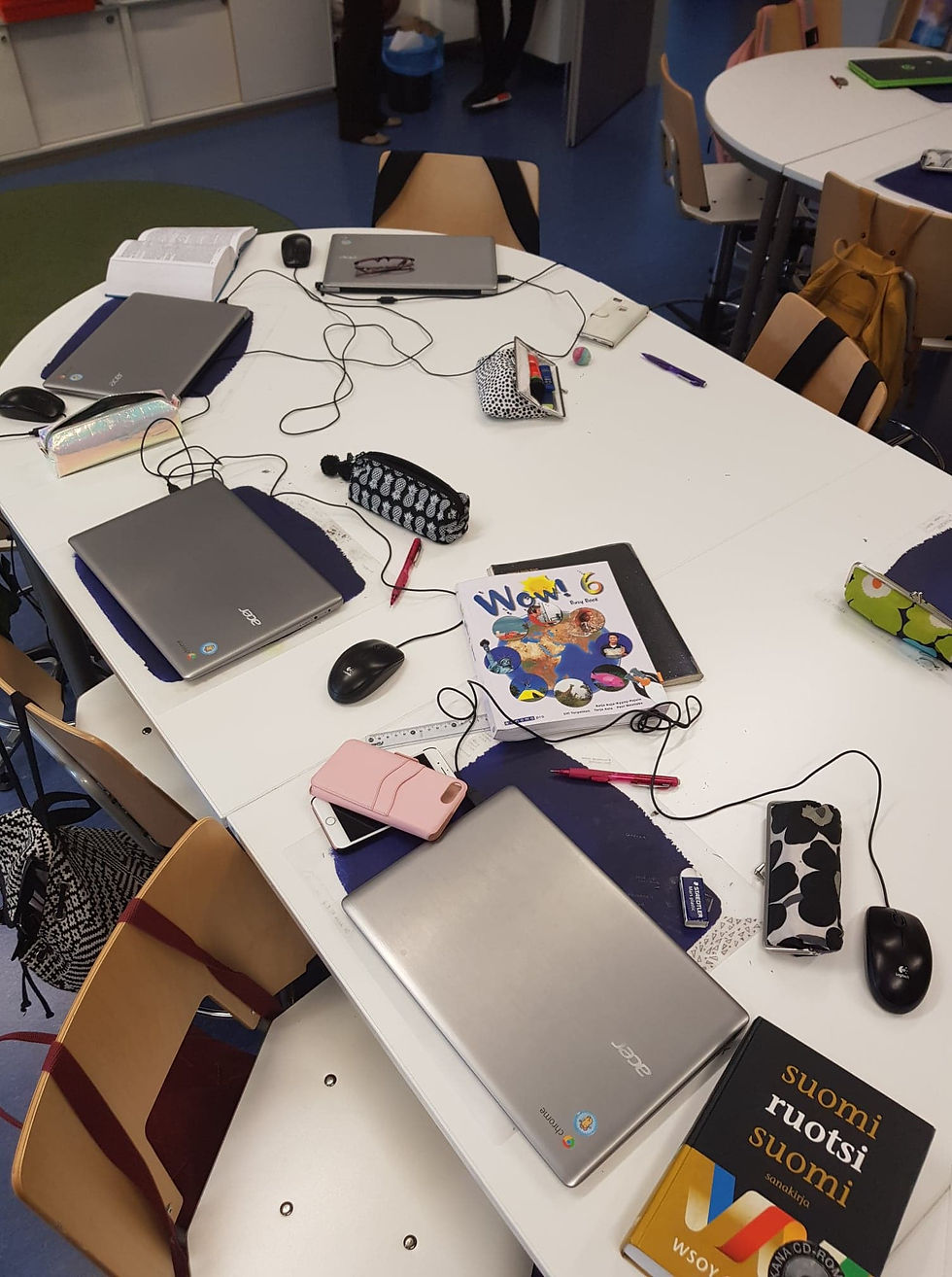When Schools Ban Digital Tools, They Also Ban Opportunities
- Sep 16
- 4 min read
Across Europe, one country after another is choosing the “easy solution” to the challenge of digital distraction: banning mobile phones, laptops, and sometimes even tablets in schools. France, Italy, the Netherlands, Hungary, Finland, Belgium, Sweden – the list keeps growing. Politicians gain quick applause by promising a school environment “free of screens.” Parents sigh with relief. Teachers are told that discipline will be easier.
But what is really being solved here?
Yes, we know that digital distraction is real. Young people spend hours scrolling through TikTok, YouTube, and Instagram. Yes, there is a link between excessive screen time and declining mental health. Yes, classrooms sometimes feel more like battlegrounds for attention than safe spaces for learning.
Yet none of this means that digital technology has no place in education. On the contrary: by banning devices outright, schools risk throwing away the very tools that can help students learn, investigate, and thrive in a complex world.
A Misdiagnosis of the Problem
The problem is not the devices themselves. The problem is how we use them. A phone in a pocket buzzing with notifications is a distraction. The same phone, opened under teacher guidance, can become a scientific calculator, a dictionary, a research library, even a creative writing studio.
What is being banned is not simply a gadget – it is a potential instrument of learning. The bans treat technology as an enemy, rather than as a tool that must be mastered.
Imagine if, during the early days of books, schools had banned novels because students were “reading instead of paying attention.” Imagine if, in the early days of electricity, schools had declared lamps too dangerous and gone back to candles. Every generation faces a choice: to fear new tools, or to teach young people how to use them wisely.
The Myth of Distraction
Supporters of bans often argue that digital devices are “the main source of distraction.” But this is a narrow view of classroom reality. Distraction can occur in many forms:
The teaching content – when it feels irrelevant or disconnected from students’ lives.
Social relations – when conflicts, bullying, or group tensions dominate the classroom atmosphere.
The classroom itself – when overdecorated or overstimulating environments pull attention away.
Noise – when the physical environment makes concentration difficult.
Teaching strategies – when methods are repetitive, uninspiring, or fail to engage curiosity.
Puberty and social dynamics – the emotional, hormonal, and social changes of adolescence can create tension, excitement, or preoccupation that distracts from learning.
And etc.
To blame distraction solely on digital devices is to misdiagnose the problem. It is easier, politically and administratively, to ban an object than to rethink pedagogy.
But the deeper issue lies in how we conceive the purpose of school. Too often, school is framed as a place for teaching – where knowledge is delivered from teacher to student – rather than a place for learning, where curiosity, inquiry, and creativity are nurtured.
In a “teaching-centered” model, devices appear as intruders. In a “learning-centered” model, they become tools – no different than books, microscopes, or pencils.
The Missed Opportunity
By banning digital devices, schools also ban the opportunity to teach responsible digital use. If the classroom is the one place where students cannot practice safe and meaningful engagement with technology, where will they learn it? Outside of school, on their own, guided by algorithms and influencers, not by educators.
This is a paradox: in the name of “protecting children,” we leave them unprepared for the reality they will face every day of their lives.
A Humanistic Alternative: The HILE Model
The Humanistic and Investigative Learning Environment (HILE) was developed precisely to address this challenge. HILE is not about giving students more screen time. It is about transforming digital tools into instruments of inquiry, reflection, and creation.
Teacher-led: Digital tools are never used randomly. The teacher guides when, how, and why they are used.
Purpose-driven: Every digital activity has a clear learning objective – research, analysis, collaboration, creation.
Balanced: Digital inquiry is always complemented by offline activities – discussion, outdoor exploration, creative projects.
Ethically aware: Students reflect not only on the content they find, but also on how technology shapes knowledge, identity, and society.
In HILE, a laptop is not a distraction; it is a laboratory. AI is not a shortcut to answers; it is a partner in questioning. The screen is not a wall; it is a window.
The Real Choice
When politicians propose bans, they present it as if we face only two options:
Total freedom with devices – chaos in classrooms.
Total bans – peace, but at the cost of digital literacy.
HILE shows that there is a third path: structured, ethical, human-centered use of digital tools. Instead of fearing the future, we can prepare students to shape it.
Conclusion
The world our children are entering will not be less digital – it will be more digital, more interconnected, more AI-driven. The choice is not whether students will use technology, but whether they will learn to use it wisely.
Banning devices in schools may bring short-term calm, but it creates long-term blindness. If we want our students to grow into thoughtful, responsible, creative citizens, then we must show them how to turn digital tools into instruments of learning, not distractions.
This is the mission of HILE – and it is, I believe, the mission that education needs most urgently today.





Comments